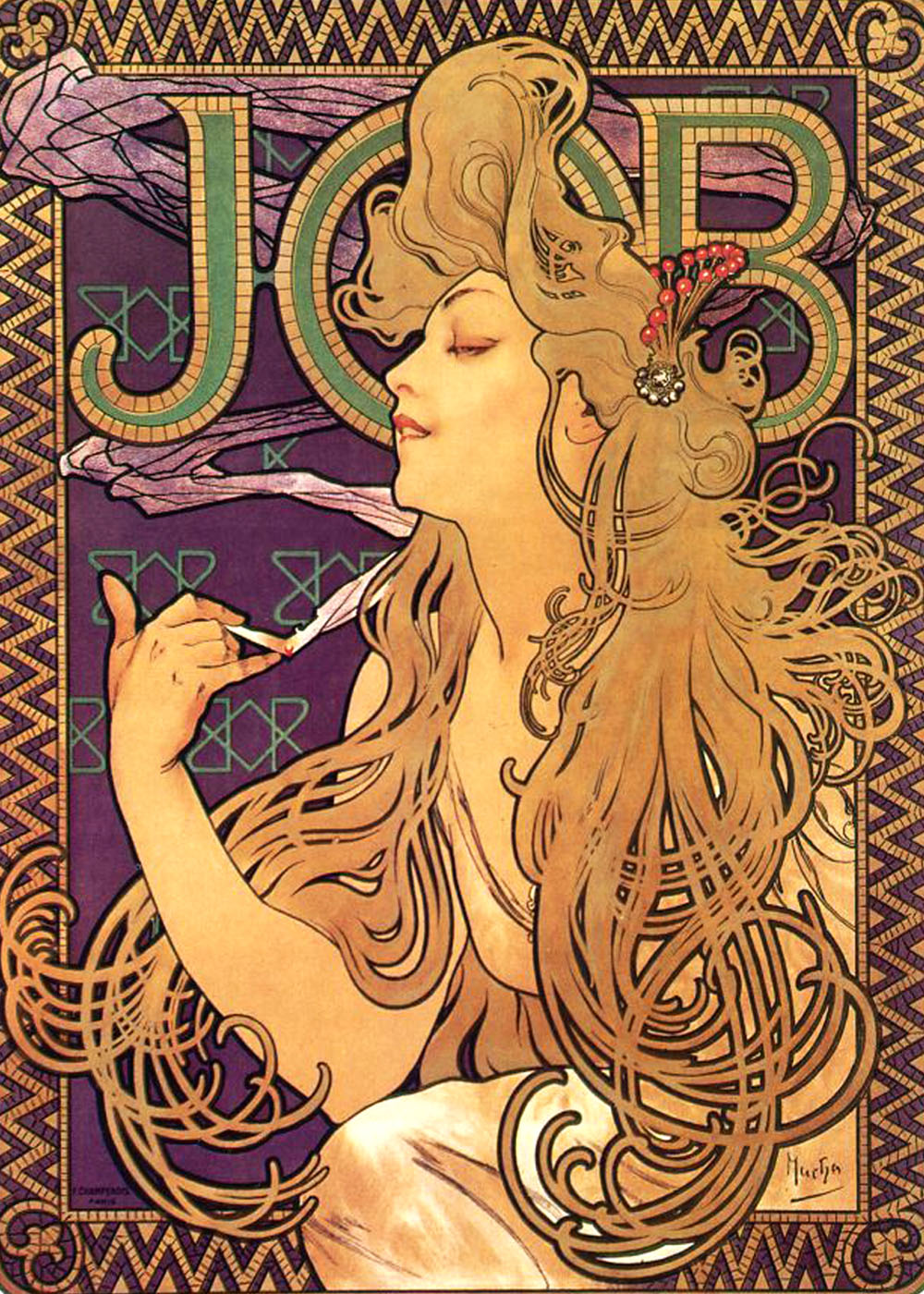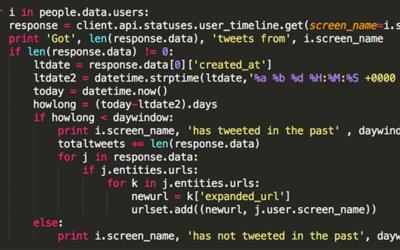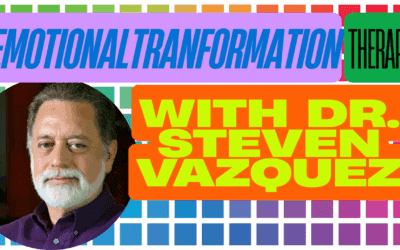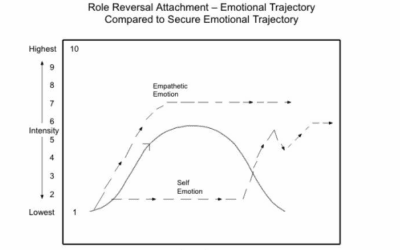Advertising has long drawn upon psychology to influence consumers and shape their behavior. As documentary filmmaker Adam Curtis explores, some of the earliest uses of psychological theories in advertising and public relations can be traced back to Sigmund Freud’s nephew Edward Bernays in the early 20th century.
Bernays and the Application of Freudian Ideas
Bernays was one of the first to apply Freudian ideas of the unconscious mind to advertising and public manipulation. In one famous case study, he helped the American Tobacco Company break the taboo around women smoking cigarettes by rebranding them as “torches of freedom” – a symbol of women’s liberation and independence.
By staging a publicity stunt at the 1929 Easter Sunday Parade in New York City, Bernays arranged for a group of fashionable young women to light up cigarettes in front of the press. He had tipped off reporters ahead of time, telling them that a group of suffragettes would be protesting by lighting “torches of freedom.” The stunt generated widespread media coverage and helped to break the longstanding taboo against women smoking in public.
Bernays also pioneered the use of celebrity endorsements and product placement. He promoted Dixie Cups as the sanitary alternative to shared glasses, and helped Procter & Gamble’s Ivory soap become a household name by placing it in films and having celebrities claim to use it. By presenting brands as an integral part of an attractive, aspirational lifestyle, Bernays paved the way for the rise of modern consumer culture.
This set a template that would be followed by advertisers for decades to come – tapping into people’s hidden desires, fears and aspirations to sell them products, often in ways that preyed upon their insecurities. French advertising psychologist Clotaire Rapaille has built his career on this approach, using in-depth interviews and focus groups to uncover the subconscious associations Americans have with various products and brands.
Rapaille’s Case Studies: Sargento, Hummer and Folgers Coffee
In one well-known case study, Rapaille worked with the Sargento cheese company to boost their slumping sales. Through his research, he concluded that Americans subconsciously wanted their cheese to be “dead” and sealed away, associating exposed cheese with spoilage and uncleanliness. This led to the invention of Sargento’s resealable ziplock packaging – the cheese could be sealed in a “body bag” and consumed with peace of mind. The new packaging proved to be a huge success.
Rapaille applied a similar approach in his work with car companies. In a famous ad campaign for the Hummer SUV, a huge, tough, military-style vehicle is seen rolling down the street – an embodiment of American strength and virility. But then the driver’s window rolls down, revealing a small blonde woman at the wheel. The message was that even the most insecure, emasculated men could reclaim their power by purchasing a Hummer.
According to Rapaille, Americans are plagued by feelings of vulnerability and weakness, which they seek to overcome through conspicuous displays of brute strength – what he calls “bravado wars.” This insight has informed the marketing of countless products over the years, from gas-guzzling cars to bulky power tools.
In another famous case study, Rapaille worked with Folgers Coffee to help them combat sagging sales in the face of Starbucks’ growing popularity. Through extensive interviews, he concluded that Americans associated coffee with the comfort and security of home. Folgers soon launched a series of sentimental TV ads featuring idyllic family scenes and the slogan “The best part of waking up is Folgers in your cup.”
By tapping into customers’ subconscious need for stability and “the American hearth,” Folgers was able to boost sales and connect its brand with positive emotions and memories. Never mind that actual consumption of Folgers rarely lives up to this romanticized image – the key is the aspirational identity being sold.
Parallels to Trauma Therapy Techniques
More recently, some experts have pointed out disturbing parallels between modern advertising techniques and the methods used to treat anxiety, phobias and PTSD. Psychologist Clotaire Rapaille has openly stated that his goal is to help consumers transfer their emotions from their trauma to the brand or company.
In a sense, advertisers are taking advantage of the same mechanisms that make exposure therapy and other trauma treatments effective – by repeatedly linking a product to positive emotions and experiences, they are able to reduce anxiety and negative associations, essentially “rewiring” the brain.
This is similar to the approach used in Eye Movement Desensitization and Reprocessing (EMDR) therapy, which helps patients reprocess traumatic memories by associating them with positive thoughts and feelings. The therapist might have the patient visualize the distressing memory while simultaneously focusing on a positive mantra or comforting tactile sensation. Over time, this weakens the trauma’s grip and makes it feel more distant and manageable.
Marketers employ a version of this technique by consistently presenting their product in the context of desirable experiences and outcomes. Just as the EMDR patient learns to associate their trauma with safety and calm, the consumer comes to link the advertised product with feelings of happiness, social acceptance, self-confidence, or whatever other emotion the ads are designed to evoke.
Another parallel can be seen in the use of “subliminal” messaging in advertising. This technique involves flashing images or words on a screen so quickly that the viewer doesn’t consciously perceive them. The idea is that these hidden messages will bypass the conscious mind and directly impact the subconscious, influencing behavior without the person’s awareness.
Subliminal advertising has been banned in many countries due to ethical concerns. But the same basic principle is at work in more subtle forms of “priming” and emotional manipulation. Ads might use certain colors, symbols, or juxtapositions to evoke desired subconscious associations, without the viewer ever quite knowing why they suddenly feel a certain way.
In some ways, this mirrors the techniques used in “hypnotherapy” and other subconscious-focused therapeutic methods. The therapist might use guided imagery, subtle verbal cues, or symbolic stimuli to evoke certain emotional states or plant post-hypnotic suggestions. The goal is to change subconscious patterns without necessarily engaging the conscious mind.
Of course, in a therapeutic context, this is done with the full knowledge and consent of the patient, with the aim of healing and personal growth. In advertising, it’s a one-way manipulation designed to serve the interests of the seller, often at the expense of the buyer’s autonomous decision making.
Perhaps the most insidious parallel between advertising and trauma therapy is the way that both can create a kind of psychological dependence. Trauma victims often become fixated on and even addicted to external sources of comfort. The intense emotional charge of revisiting and numbing traumatic experiences can become a kind of compulsive routine, even as it ostensibly aims at resolution and healing.
Similarly, the cycle of consumer desire and temporary gratification can take on an addictive quality. We’re drawn to chase after the positive feelings and self-image promised by product imagery, and then we come down after the purchase high fades. But rather than questioning the entire consumerist loop, we’re just compelled to reach for the next purchase, and the next.
In both cases, there’s a tendency to get hooked on the temporary “fix” offered by the treatment/purchase, even as the underlying issue remains unresolved. Just as the trauma therapy patient can get stuck endlessly repeating the cycle of triggering and catharsis, the consumer can get trapped in an endless cycle of desire and disappointment, chasing fulfillment in the very system that keeps deferring it.
This addictive dynamic is reinforced by the way that consumer culture tends to present products as shortcuts to self-actualization. We’re constantly bombarded with images equating the acquisition of certain products with the achievement of existential fulfillment and authentic self-expression. If you want to be a rebel, buy a Harley. If you want to be sophisticated, wear Prada. If you want to be a good mom, drive a Volvo.
The underlying message is that our deepest human needs and potentials can be met through consumption – that buying the right product is a valid substitute for doing the hard work of personal growth and self-realization. By purchasing our way into a ready-made identity, we can bypass the struggles of individuation and magically arrive at an idealized self-image.
Of course, this promise is always illusory. No amount of consumption can actually fill the void of an alienated life or substitute for the development of real selfhood. But the fantasy is a powerful one, and it’s hard to resist when it’s being continually reinforced by a billion-dollar advertising industry.
In reality, authentic self-expression and individuation require turning inward and confronting our own depths, not just acquiring a surface sheen of identity trappings. They require grappling with our shadow and integrating the disparate parts of our psyche, not just identifying with a one-dimensional consumer archetype.
This is the real work of psychological growth and self-actualization – and it’s work that consumer culture actively discourages us from doing. After all, a society of individuated, self-fulfilled people is a marketer’s worst nightmare. Much better to keep us perpetually chasing after an unattainable consumer ideal, always hungry for the next product that promises to finally make us complete.
Ultimately, the parallels between advertising and trauma therapy techniques point to the way that consumerism operates as a kind of “false therapy” on a societal scale. It offers us a seductive but ultimately hollow promise of healing and wholeness, all while keeping us trapped in a cycle of addiction and alienation.
To break free of this cycle, we need to develop critical awareness of the psychological manipulation at play in advertising, and actively resist its attempts to define our identities and desires. At the same time, we need to do the real therapeutic and spiritual work of confronting our own wounded psyches and developing authentic selfhood from the inside out.
This is not a simple or easy task, given how thoroughly we’re all steeped in the ethos of consumerism from cradle to grave. But it’s a necessary one if we ever hope to create a society of psychologically whole and autonomous human beings, rather than just a mass of malleable, endlessly exploitable consumer subjects.
A Jungian Perspective on Advertising and Individuation
From a Jungian perspective, this could be seen as a perversion of the process of individuation – rather than helping people confront their Shadow and integrate the disparate parts of their psyche, consumerism encourages them to cover over their insecurities and buy into a false self, represented by the idealized images and archetypes of advertising.
Individuation, according to Jung, is the process of becoming a fully realized individual by integrating the conscious and unconscious aspects of the psyche. This involves acknowledging and accepting our Shadow – the repressed, often darker parts of ourselves that we prefer not to identify with. Only by bringing the Shadow into consciousness and reconciling it with our public-facing persona can we hope to become whole, authentic beings.
Advertising short-circuits this process by presenting an idealized image of the self that can be attained through consumption. Rather than doing the difficult work of self-acceptance and integration, we are encouraged to simply buy our way to a more perfect identity. The Shadow is never confronted, only further repressed in favor of an illusion of wholeness.
The archetypes and symbols used in advertising also serve to keep consumers trapped in a kind of perpetual adolescence. The Jungian understanding of psychological development sees adulthood as a movement beyond identification with archetypal roles and towards the realization of the unique, individual self. But advertising relies on powerful, primordial archetypes like the Great Mother, the Warrior, the Lover, or the Magician to appeal to our unconscious desires and fantasies.
By constantly bombarding us with these larger-than-life images and personalities, consumerism encourages a kind of arrested development in which we continue to chase after archetypal ideals rather than individuating into our authentic selves. We are forever trying to emulate the perfect housewife, the rugged cowboy, the sophisticated socialite, the rebellious free spirit – whatever identity the ads are selling us.
Just like an addiction, consumerism offers a temporary salve for our psychological wounds, but ultimately keeps us trapped in an endless cycle of craving and consumption. By shortcircuiting the individuation process, it prevents us from doing the real work of self-acceptance and growth.
Cooptation of Rebellious Youth Movements
Throughout American history, capitalist forces have consistently coopted the rebellious spirit and creativity of youth movements, turning the symbols of counterculture into mass-market commodities. The pattern is a familiar one: a subculture emerges as a reaction against mainstream society, defining itself through distinctive styles of dress, music, art, and behavior.
At first, these styles are strange and threatening to the dominant culture – but over time, as the subculture gains visibility and popularity, its aesthetic is adopted and adapted by the mainstream. What started as a symbolic rejection of mass consumer society becomes the next hot trend, defanged and repackaged for mass consumption.
Consider the “Beat Generation” of the 1950s – a loose collection of writers, artists and thinkers who rejected the conformity and materialism of postwar America. Centered around figures like Jack Kerouac, Allen Ginsberg and William S. Burroughs, the Beats embraced a kind of free-wheeling, spontaneous creativity and a bohemian lifestyle of travel, sexual experimentation and drug use.
While the Beats saw themselves as standing outside mainstream society, it wasn’t long before their distinctive style – the black turtlenecks, berets, and bongos – became a popular fashion. Suburban teenagers started holding “beatnik” parties, and in 1959, Dobie Gillis – a clean-cut sitcom character – was given a “beatnik” best friend named Maynard G. Krebs.
The Beat ethos of “dropping out” of mainstream society was soon reduced to a set of consumer choices: buying bongos and berets, listening to jazz, maybe reading a little Kerouac. The complex social critique offered by the original Beats was lost as their aesthetic was absorbed into the mainstream.
A decade later, the “hippie” counterculture fell victim to a similar process. Emerging out of the Beat movement and the 60s Folk Revival, hippie culture was closely linked to the Civil Rights movement and the growing opposition to the Vietnam War. It represented a broad rejection of authority, capitalism, and traditional American values in favor of communal living, free love, psychedelic drug use, and a kind of mystical environmentalism.
At its height in the late 60s, the hippie movement was a visible and vocal challenge to the status quo. But by the early 70s, the trappings of hippie culture – the tie-dye, the bell-bottoms, the peace signs – had been fully commercialized. Advertisers started using psychedelic designs and countercultural slogans to sell everything from soft drinks to cleaning products. VW Beetle ads urged consumers to “Join the Beetle Revolution,” while Coca-Cola declared “I’d Like to Buy the World a Coke” against a backdrop of a hippie-style hilltop sing-along.
The radical edge of the hippie movement was blunted as it was reduced to a fashion style and a set of consumer preferences. The original counterculture had sought to drop out of consumerism and create alternative ways of living – but ironically, their rejection of mainstream culture ended up creating a lucrative new market for hip, “alternative” products.
The punk explosion of the late 70s was in many ways a reaction to the cooptation of 60s counterculture. Disgusted by the commercialism and perceived phoniness of hippie idealism, punks set out to create a kind of “anti-fashion” based on ripped thrift-store clothes, aggressive music and a nihilistic attitude.
But punk, too, proved eminently marketable. The use of intentionally “ugly” and shocking imagery lent the style an alluring edginess, and it wasn’t long before high fashion designers were drawing inspiration from punk looks. By the early 80s, you could buy pre-ripped punk jeans and studded leather jackets at mainstream department stores. The punk attitude was reduced to a sullen pose, the perfect accessory for suburban teenage rebellion.
In each case, the advertising industry found a way to turn symbols of rebellion against consumerism into hot new consumer trends. The spectacle of defiance was preserved, but the substance was drained away, replaced with empty signifiers of individual “edginess” and “authenticity.”
This process of cooptation can be understood through the lens of French theorist Guy Debord’s concept of “recuperation.” In his 1967 book The Society of the Spectacle, Debord argued that modern capitalism maintains its power by converting all genuine human experiences and desires into commodified representations – what he called “spectacles.”
For Debord, the spectacle is “a social relation between people that is mediated by images.” Instead of relating to each other directly, we interact through the consumption of images that stand in for real social connection. The spectacle thus serves to isolate and alienate us, even as it presents itself as a unifying force.
Debord saw the cooptation of radical ideas and imagery as a key feature of the spectacle. By turning the symbols of dissent into just another set of consumer choices, the spectacle neutralizes threats to the status quo. Would-be revolutionaries are pacified with the illusion of rebellion, while the fundamental structures of capitalist society remain untouched.
This analysis casts the history of countercultural cooptation in a new light. The Beat Generation, the hippies, the punks – each represented a potential challenge to the dominance of consumer capitalism. But by converting their symbols of revolt into mere spectacles, the system was able to absorb and neutralize them. The spectacle of rebellion was used to reinforce the very order it claimed to oppose.
In more recent decades, even the anti-consumerist ethos itself has been turned into a kind of consumer pose. Consider the rise of “hipster” culture in the early 2000s – a sensibility defined by a knowing irony, a fetishization of the authentic and artisanal, and a rejection of mainstream corporate culture.
The hipster aesthetic was all about eschewing the fake and mass-produced in favor of the real, the local, the vintage, the handmade. But of course, it didn’t take long for this sensibility itself to be mass marketed. Urban Outfitters started selling faux-vintage T-shirts and kitschy 80s memorabilia. PBR became the go-to hipster beer brand, despite being a mass-market product of a large corporation. Even anti-corporate activism itself became a kind of fashionable posture, as seen in the cooptation of Occupy Wall Street imagery in Levi’s ads.
The deeper irony here is that hipster culture’s obsession with authenticity was itself a kind of pose, an image to be projected. The authenticity fetish is just the inverse of the consumerist mindset – it’s still all about constructing an identity through the right set of consumer choices, even if those choices are positioned as “non-consumerist.”
The “hipster” is just another kind of spectacle, another commodified image of rebellion that serves to reinforce the status quo. By focusing on highly individualized forms of “resistance” through personal consumer choices, hipsterism actually serves to further atomize and de-politicize its participants.
After all, a society of people busily curating their own unique, authentic personal brands is a society with little interest in banding together to challenge entrenched power structures. In this way, even the spectacle of opposition to consumer capitalism ends up serving the system’s ends.
Cultivating Real Authenticity and Autonomy
To be psychologically healthy and authentic in our modern world, it’s crucial that we cultivate awareness of these advertising tactics and learn to deconstruct the messages we’re bombarded with every day. By developing our ability to think critically and independently, we can break out of compulsive patterns and begin making more intentional choices – ones that align with our true needs and values, rather than the dictates of consumer culture.
This involves not just seeing through manipulative ads, but interrogating the deeper assumptions and values that they reflect and reinforce. We need to ask ourselves: What vision of happiness and fulfillment are these messages selling? Why do I feel drawn to certain brands and products? What insecurities or longings are they appealing to in me?
By bringing these questions into conscious awareness, we can start to disentangle our authentic desires from socially programmed ones. We can notice when we’re using consumption to numb or distract ourselves from deeper issues. And we can begin to imagine alternative ways of living and relating that aren’t based on the atomized pursuit of commodified experiences.
Ultimately, real authenticity means moving beyond the narcissistic project of curating a personal brand. It means daring to encounter ourselves and each other directly, without the mediating filter of images and spectacles. It means being vulnerable enough to face our shadows, and integral enough to show up as our whole selves.
Only by confronting our inner selves directly – our traumas, vulnerabilities and shadows – can we hope to individuate and become fully integrated beings. Therapy, introspection, mindfulness, and other psychological and spiritual practices can aid in this work. But we must be willing to look beyond the quick fix promised by consumerism, and do the real work of growth and self-actualization.
Building Authentic Community and Culture
Just as importantly, we need to create authentic forms of community and culture outside the consumer paradigm. The alienating effects of the spectacle can only be countered by the direct experience of solidarity and co-creation.
This means coming together to build spaces and practices that foster genuine human connection and shared meaning-making. It means valuing the local, the participatory, and the self-directed over the mass-produced and centrally controlled. And it means grounding our sense of identity and belonging in something deeper than the fluctuating trends of the market.
In practical terms, this can take many forms. It might mean supporting local farmers, artisans, and businesses rather than just buying the most convenient or cheaply priced option. It might mean getting involved in community organizations, volunteer work, or grassroots political activism. It could mean making time for face-to-face conversation, collaborative projects, and shared rituals and celebrations.
The key is to prioritize activities that bring us into direct, unmediated engagement with each other and our environment. To the extent that we depend on commercial intermediaries for our social and cultural needs, we remain vulnerable to the fragmenting and manipulative effects of the spectacle.
Building genuine community is also essential for maintaining the kind of collective memory that consumer culture tends to erase. When we participate in a shared lineage of meaning and practice, we become aware of ourselves as part of an ongoing story that is larger than our individual lives. We gain a sense of rootedness and continuity that can serve as an anchor against the transient, ever-shifting surface of the spectacle.
Of course, in our hyper-mediated age, it’s not realistic or even desirable to completely unplug from globalized consumer culture. The technologies and economic structures that shape our world aren’t going away anytime soon. And many of these systems do offer real benefits and efficiencies alongside their more problematic effects.
Rather than pursuing a purist fantasy of total withdrawal, we must learn to engage critically and selectively with the cultural marketplace. We can learn to use its tools and platforms in ways that serve authentic communication and connection rather than shallow spectacle. And we can create hybrid spaces that straddle the boundary between the commercial and the communal, repurposing the resources of consumer culture for more life-affirming ends.
Doing this successfully requires a kind of dual consciousness. On the one hand, we need to cultivate enough critical distance to see through the hype and manipulation of commercial images and narratives. On the other hand, we need to retain enough creative engagement to imagine alternative uses for the materials of consumer culture.
In other words, we must become skilled at both deconstruction and reconstruction, analysis and synthesis. We need to be able to take apart the spectacle and see how it works, but also to put its pieces back together in new, more authentic and empowering configurations.
The Promise and Challenge of Participatory Culture
One hopeful model for this kind of engaged, creative resistance to consumer alienation is the emergence of participatory culture online. From open source software and Wikipedia to grassroots media and fan communities, digital technologies have enabled new forms of decentralized, collaborative cultural production.
In these participatory ecosystems, consumers become producers, spectators become participants. The unidirectional flow of mass media gives way to a more multidirectional and improvisational cultural conversation. Individuals and communities gain new tools for telling their own stories, sharing their own creations, and reimagining the narratives and imagery they’ve received from commercial culture.
In some ways, this participatory ethos harkens back to older, folk cultural traditions of storytelling, handicraft, and communal ritual. At the same time, it represents something new: A post-scarcity form of collective meaning-making that hybridizes the archaic and the high-tech, the grassroots and the global.
Of course, participatory culture is no panacea. Much of it remains embedded in and dependent on commercial platforms and infrastructures, from social media sites to crowdfunding services. And the line between authentic co-creation and exploitative “user-generated content” schemes can often be blurry.
Moreover, the very accessibility and irreverence of participatory culture can sometimes serve to accelerate the logic of recuperation, as even the most marginal and subversive expressions are quickly cycled back into the cultural marketplace. The same digital networks that enable new forms of creative resistance also allow for the rapid commodification and diffusion of their fruits.
And yet, the participatory impulse itself points beyond the passivity and isolation of the spectacle. In a world where attention itself is increasingly treated as a commodity, the act of direct engagement and co-creation with others represents a powerful form of resistance. By taking an active role in shaping our cultural environment, we reclaim a measure of autonomy from the manufactured desires of advertising and the attenuating effects of mediated consumption.
Participatory culture, then, might be seen as a kind of gymnasium for flexing and strengthening the muscles of social creativity and collaboration. The more we exercise these capacities, the more empowered we become to create authentic culture on our own terms, beyond the dictates of the market.
At the same time, we must remain mindful of the ways that even our most creative and communal impulses can be co-opted and turned against us. As we build new forms of participatory culture, we need to build in safeguards against recuperation and enclosure. We need to prioritize the cultivation of resilient, self-determining communities over the pursuit of viral fame or commercial success.
Ultimately, the project of authentic, post-consumerist culture is not something that can be achieved once and for all. In a world thoroughly saturated by advertising and the logic of the market, there is no pure space of unmediated expression. Resistance to alienation and inauthenticity is an ongoing practice, a continual process of negotiation and reinvention.
As we undertake this practice, we must learn to balance critical skepticism with creative openness, oppositional defiance with flexible resourcefulness. We need to be steadfast in our refusal of consumerist illusions, but also ready to seize and repurpose the tools and materials of consumer culture for liberating ends.
Most of all, we need each other. The path to a more authentic and fulfilling way of life beyond consumerism is not one we can walk alone. It is only through joining together in communities of shared meaning and purpose that we can hope to resist the atomizing and expropriating force of the spectacle.
In coming together to create authentic culture, we create ourselves. We reclaim the authorship of our own stories and the power to shape our own realities. Weaving new webs of connection and creative collaboration, we find resilience against the psychic dislocation of the consumer-mediated world. And in the face of alienation and inauthenticity, we assert our inalienable right to meaning, to beauty, and to each other.
Facing Trauma
In a world saturated with psychologically manipulative advertising, it takes concerted effort to resist the siren song of consumerism and carve out an authentic identity and way of life. Understanding the deep history of psychology’s influence on advertising and PR can help to demystify the dark arts of persuasion. But the onus is ultimately on each of us to do the difficult, lifelong work of waking up to our own unconscious drives, healing our traumas, and individuating in the face of immense cultural pressures to conform.
Only through practicing critical self-awareness and creative cultural resistance can we hope to flourish as free and fulfilled human beings in an age of consumer capitalism. This work is at once profoundly personal and inherently political – a transformation of both our inner lives and our shared world.
By coming together to create participatory, post-consumerist forms of community and culture, we take the reins of our own psychological and social development. We transform the recuperative powers of consumer capitalism into an engine of authentic collective liberation. And in so doing, we open up new horizons of human potential beyond the narrow confines of the consumer spectacle.
This is the great challenge and promise of our time – to reclaim our mental and cultural sovereignty from the forces of consumerist manipulation and alienation. To create lives and communities of substance, creativity, and solidarity in a world that would reduce us to shallow, isolated spectators.
It is a daunting and never-finished task, demanding continual effort and vigilance. But it is also a grand adventure, rich with beauty, meaning, and transformative possibility. As we rise to this challenge, we become active participants in the unfolding story of human consciousness and culture. We take our place in the age-old struggle for a world in which all people can freely flourish and find authentic belonging.
Seen in this light, the struggle against consumer alienation is nothing less than the struggle for the soul of our civilization. It is a fight for the human birthright of agency, creativity, and connection in an age of unprecedented technological and economic power. By joining in this struggle, we become co-creators of a more beautiful and life-affirming future – a future in which we can finally feel at home in our own minds, communities, and world.
The Archetypes of Advertising
Advertising has long drawn upon the power of archetypes to influence consumers and shape their behavior. As defined by psychologist Carl Jung, archetypes are universal, innate models of people, behaviors or personalities that play a role in influencing human behavior. They represent fundamental human motifs and evoke deep emotions and motivations.
The 12 main archetypes frequently used in advertising include:
The Innocent:
Represents purity, goodness, morality, simplicity, nostalgia and childhood. Examples: Coca-Cola, Dove, Nintendo Wii. The Innocent Archetype
The Sage:
Driven by the pursuit of truth and knowledge. Represents wisdom, intelligence, objectivity and education. Examples: Google, BBC, The New York Times, PBS. The Sage Archetype
The Explorer:
Seeks discovery, adventure and new experiences. Values freedom, authenticity, individualism. Examples: Jeep, Red Bull, The North Face, Patagonia. The Explorer Archetype
The Rebel:
Challenges convention and the status quo. Represents liberation, revolution, edginess. Examples: Harley Davidson, Diesel, Virgin. The Rebel Archetype
The Magician:
Associated with imagination, vision and spiritual power. Represents transformation and influence. Examples: Disney, Apple, Dyson. The Magician/Wizard Archetype
The Hero:
Represents mastery, strength, courage, honor and achievement. Examples: Nike, Marines, Duracell. The Hero Archetype
The Lover:
Evokes intimacy, passion, sensuality and commitment. Examples: Victoria’s Secret, Chanel, Häagen-Dazs. The Lover Archetype
The Jester:
Brings joy, humor and irreverent fun. Represents playfulness and spontaneity. Examples: Old Spice, M&M’s, GEICO. The Jester Archetype
The Everyman:
Relatable, authentic and down-to-earth. Represents belonging and connection. Examples: IKEA, Wendy’s, Gap, Cheers. The Everyman Archetype
The Caregiver:
Provides care, protection and nurturing. Represents compassion and generosity. Examples: Campbell’s Soup, Johnson & Johnson, UNICEF. The Caregiver Archetype
The Ruler:
Associated with leadership, power, control, and status. Examples: British Airways, Mercedes-Benz, Rolex. The Ruler Archetype
The Creator:
Imaginative, artistic and inventive. Represents creativity and self-expression. Examples: Lego, Adobe, Canon. The Creator Archetype
Many brands also tap into potent animal archetypes, like the powerful lion or cunning fox, to associate their products with certain primal qualities. See more on animal archetypes in advertising.
By consistently linking their products and brand image to these archetypes, advertisers aim to bypass rational consideration and appeal directly to consumers’ subconscious desires, fears and fantasies. Like the trauma therapy techniques they often resemble, archetypal ads seek to rewire deep-seated emotional associations.
The Psychology of Advertising: From Bernays to Rapaille
Some of the earliest and most influential applications of psychology to advertising can be traced back to Sigmund Freud’s nephew Edward Bernays in the early 20th century. Bernays was a pioneer in using Freudian ideas to shape public opinion and consumer behavior. His most famous campaigns included breaking the taboo on women smoking by branding cigarettes as “torches of freedom” and boosting sales of Dixie Cups by presenting them as the sanitary, modern alternative to communal glasses.
French advertising executive Clotaire Rapaille built on this Freudian foundation in his psychological approach to branding and product design. Through in-depth interviews, Rapaille aims to uncover consumers’ subconscious associations and use them to create products that resonate on a deep emotional level. His successes include advising Sargento to package cheese in “body bags” to cater to Americans’ fear of exposed food and designing the Hummer to appeal to desires for a feeling of safety in an insecure world.
The Anxious Animal in the Consumerist Cage: Calhoun’s Universe 25
The psychological effects of the modern consumerist environment have been compared to the fate of the overcrowded mouse utopia in John Calhoun’s famous Universe 25 experiment. Parallels have been drawn between the social withdrawal, sexual deviance, and self-destructive behaviors of Calhoun’s mice and the alienation, sexual commodification, and addictive consumption seen in today’s more “developed” societies. Advertising manipulates our primal fears and longings in an already stressful, confusing, overstimulating environment.
Theorists of Consumer Society: Debord, Fromm, Baudrillard
Many radical thinkers have analyzed the psychological impacts of living in a consumerist, media-saturated world. The Situationist Guy Debord argued that modern capitalism reduces life to a “spectacle” – a never-ending stream of seductive images that distract us from authentic existence. Social psychologist Erich Fromm diagnosed capitalist society as fostering an “having mode” of existence obsessed with ownership and consumption rather than the “being mode” of expressing one’s inner self creatively. Postmodern philosopher Jean Baudrillard described a world in which simulations and images have become more real to us than reality itself.
Media Ecology and the Extensions of Man: McLuhan, Postman, Flusser
Media theorists have explored how our immersion in electronic media environments shapes our psychology. Marshall McLuhan argued that different media technologies extend and externalize different parts of the human sensorium and nervous system, with the rise of electric media creating a global “network of jabbering images.” Neil Postman warned of a culture in which all public discourse has been reduced to vacuous entertainment by television. Vilém Flusser described a shift to a new kind of imagination and thought based on the recombination of technical images.
Authentic Being in the Society of the Spectacle
French existentialists grappled with how to live authentically in modern mass society. Albert Camus depicted the absurdity of life in a meaningless universe and our search for a reason to live. Søren Kierkegaard conceived of the “aesthetic stage” of life, focused on pleasure and appearances, which we must move beyond to discover our true self. The Situationists, in particular Guy Debord, advocated playful subversions of the spectacle through techniques like dérive (drifting) and détournement (subversive visual juxtapositions)
Capitalism’s Long Counterculture Feedback Loop
Despite the best efforts of artists and activists over the decades, capitalism excels at absorbing and repurposing even the most oppositional styles and ideas. Earnest critiques of conformity and materialism by Beats and hippies in the 50s and 60s were quickly reduced to superficial fashion statements and clichés. The self-consciously “edgy” and ironic stance of the 90s alternative scene was seamlessly adapted into the advertising strategies of the 2000s and 2010s. Even anti-consumerist rhetoric itself was co-opted into a kind of alternative consumer identity by the end of the 20th century. Finding an “outside” to consumer culture remains an elusive goal.
But glimmers of hope persist in bottom-up participatory media that routes around gatekeepers and tastemakers. The problem for any would-be counterculture is not just to find new terrain not yet colonized by commercial interests, but to build resilient communities and commons that can resist enclosure and appropriation. This is the secret to achieving a more authentic culture and psychology: not a private individual project but a collective struggle for the foundations of autonomy and solidarity.
The Lure & Danger of the Left Hand Path
Consumerism is a perverse mirror image of the esoteric Left Hand Path to enlightenment. Like the occult adept, the modern consumer seeks shortcuts to personal power, or at least its simulation. Through ritual transactions we conjure an illusion of control over fate. By “investing” in our personal brand, we attempt to make the self into a little God, an invincible commodity. And like black magic, these consumerist compulsions ultimately lead us further into bondage – to debt, addiction, isolation, and inauthenticity.
The genuine “Left Hand Path”, the road of heresy and holy disobedience, demands confrontation with the true forces of darkness, within and without. Not the sanitized, prepackaged transgressions of consumer culture but a real reckoning with the shadow. And, paradoxically, it is through this often painful individuation that we emerge into an authentic common life with others, freed of illusions. There are no shortcuts to real autonomy and solidarity. Only the long way is the real way.
Towards a Post-Consumerist Culture
To reclaim ourselves from the consumerist Spectacle, we must commit to a lifelong practice of critical and creative engagement:
- Develop media literacy to decode the languages of persuasion
- Cultivate mindfulness of our true needs vs. programmed desires
- Prioritize experiences of real community and co-creation over consumption
- Build grassroots platforms for participatory culture outside the market
- Celebrate the recovery of ancestral, organic cultural forms and knowledge
- Embrace the shadow through art, ritual, and radical politics
- Help others find the courage to struggle for autonomy in an inauthentic world
Digital, Media, and Cultural Theorists and Philosophers
Bernays and The Psychology of Advertising
Claude Shannon and Warren Weaver



























0 Comments